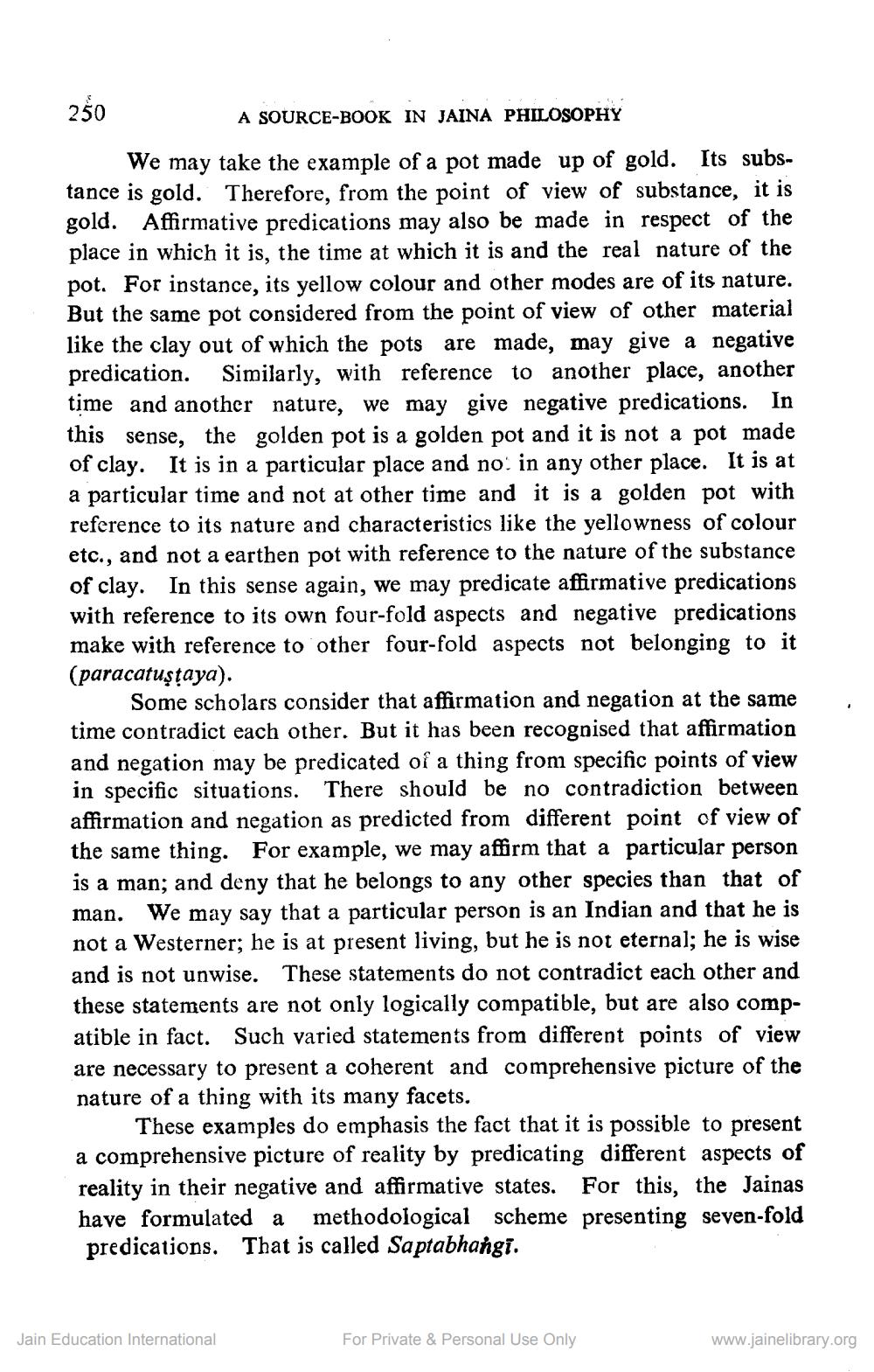________________
280
A SOURCE-BOOK IN JAINA PHILOSOPHY
We may take the example of a pot made up of gold. Its substance is gold. Therefore, from the point of view of substance, it is gold. Affirmative predications may also be made in respect of the place in which it is, the time at which it is and the real nature of the pot. For instance, its yellow colour and other modes are of its nature. But the same pot considered from the point of view of other material like the clay out of which the pots are made, may give a negative predication. Similarly, with reference to another place, another time and another nature, we may give negative predications. In this sense, the golden pot is a golden pot and it is not a pot made of clay. It is in a particular place and no: in any other place. It is at a particular time and not at other time and it is a golden pot with reference to its nature and characteristics like the yellowness of colour etc., and not a earthen pot with reference to the nature of the substance of clay. In this sense again, we may predicate affirmative predications with reference to its own four-fold aspects and negative predications make with reference to other four-fold aspects not belonging to it (paracatuştaya).
Some scholars consider that affirmation and negation at the same time contradict each other. But it has been recognised that affirmation and negation may be predicated of a thing from specific points of view in specific situations. There should be no contradiction between affirmation and negation as predicted from different point of view of the same thing. For example, we may affirm that a particular person is a man; and deny that he belongs to any other species than that of man. We may say that a particular person is an Indian and that he is not a Westerner; he is at present living, but he is not eternal; he is wise and is not unwise. These statements do not contradict each other and these statements are not only logically compatible, but are also compatible in fact. Such varied statements from different points of view are necessary to present a coherent and comprehensive picture of the nature of a thing with its many facets.
These examples do emphasis the fact that it is possible to present a comprehensive picture of reality by predicating different aspects of reality in their negative and affirmative states. For this, the Jainas have formulated a methodological scheme presenting seven-fold predications. That is called Saptabhangi.
Jain Education International
For Private & Personal Use Only
www.jainelibrary.org




